If it is true that wireless networks are becoming more and more powerful, capable and widespread, especially in the consumer environment, in large companies this is a problem: for the IT manager, a wireless network to which all employees' cell phones are connected can create crowding. of addresses, not to mention that the data traffic would risk to increase even a lot and the security and speed would decrease accordingly.
Better to create two separate networks: a wireless one that everyone can access, including guests, which only allows them to surf the internet and a more secure wired network on which clients, servers and at least the necessary smart devices reside. The reasoning is valid, but what to do when a user arrives in the company with a MacBook Pro or Surface Laptop 3 or another device without an Ethernet port with RJ45 connector?
In this case it is better to rely on an adapter: there are many on the market that, for example, using the USB-C port, but almost always to contain costs, offer speeds up to 1 Gbit, a limit that can easily be overcome today for all those networks ready for 5 GbE or 10 GbE.
QNAP QNA-UC5G1T and QNA-T310G1T are two network adapters, respectively a USB 3.0 (USB-A) to 5GbE adapter and a Thunderbolt 3 to 10GbE adapter, which do just that: bigger than they would be. to expect and certainly more expensive than average, today they offer speeds that are difficult to recover in other devices and we thought it important to examine them.
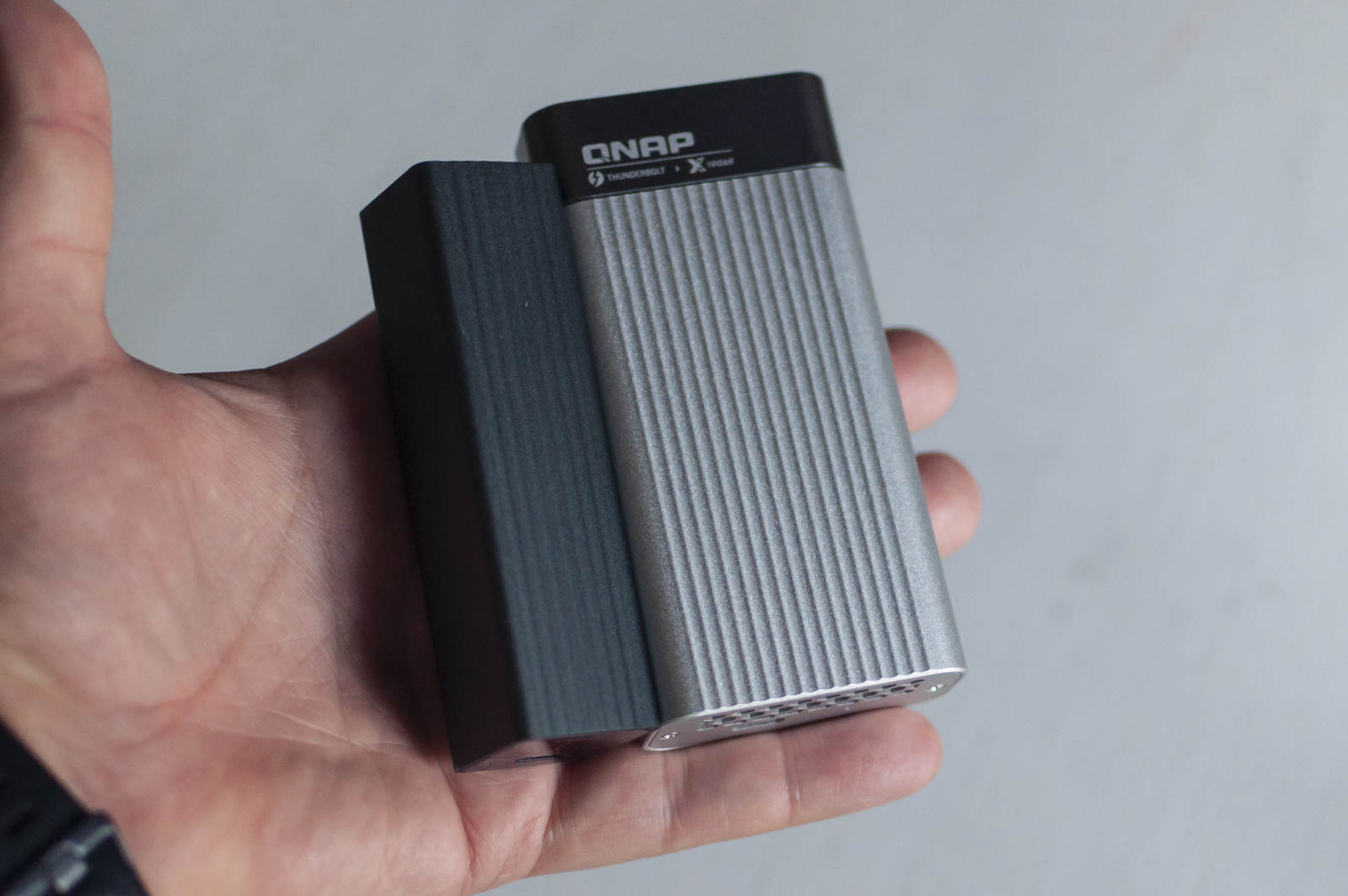 Laptops without a doubt, in the bag without problems
Laptops without a doubt, in the bag without problems
QNAP QNA-UC5G1T
The first model is the QNA-UC5G1T: it is a small parallelepiped large just over a lighter (99.8 x 28 x 27.85 mm), dark gray.
There are no buttons and there is no need for power: on the one hand a USB 3.0 type A port collects data and power, on the other the RJ45 connector transmits everything over a standard network.
The QNA-UC5G1T operates on 5Gbps, 2.5Gbps, 1Gbps and 100Mbps networks automatically, thanks to the integrated cable and fast USB port.
1 of 3 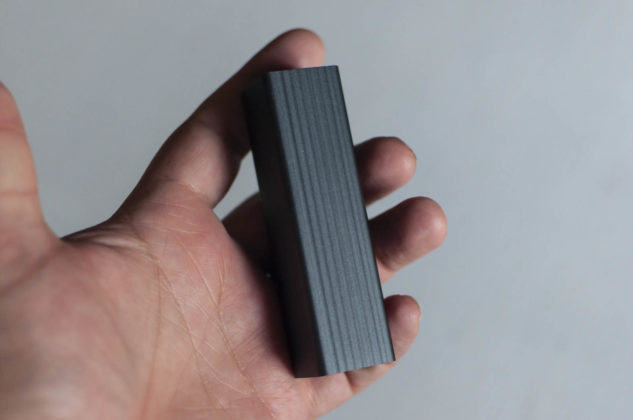
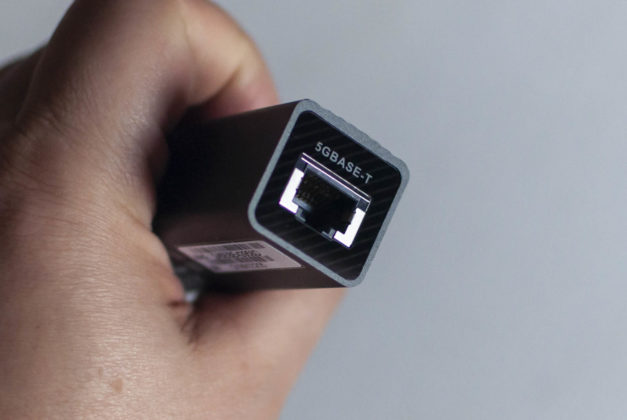
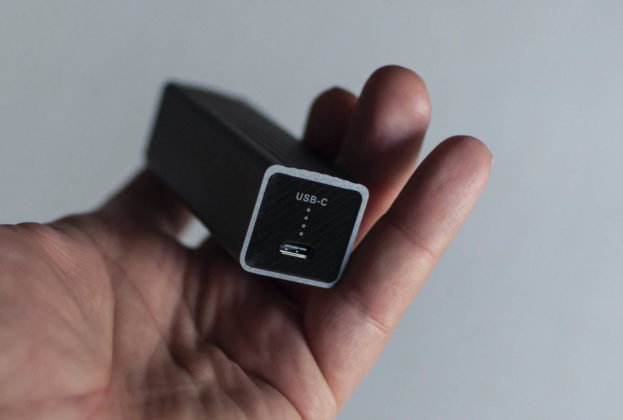
Compatibility speaks of macOS 10.13, Windows 7 and Linux core version 3.10 or later; you need to install the drivers, which can be downloaded from the manufacturer's website.
We tried it with a Mac mini 2018, it doesn't need to be done much: the Mac immediately sees the USB port in the Network panel in the system preferences and you just need to set it as the main port for the Mac to start managing the network.
One of the most interesting features is that the adapter can also be used with a QNAP NAS (it is unclear whether it is also with other brands, due to the drivers) with QTS 4.3.6 (or later): in this way the NAS can create an additional very fast network port, to access an ad hoc configured virtual switch.
 An example of Ping with the QNAP QNA-UC5G1T
An example of Ping with the QNAP QNA-UC5G1T
QNAP QNA-T310G1T
In the QNAP QNA-T310G1T we have a more powerful adapter, since it has a channel available in Thunderbolt 3 that is much wider than the USB one: the maximum speed is in fact double and reaches that of 10 GbE, interesting because in this world a MacBook Pro, for example For example, it can bridge the network gap compared to its iMac Pro and Mac Pro siblings.
The dimensions in this case are more generous, with a tapered parallelepiped of metallic color and with dimensions of 27.6 x 56 x 112 mm.
1 of 3 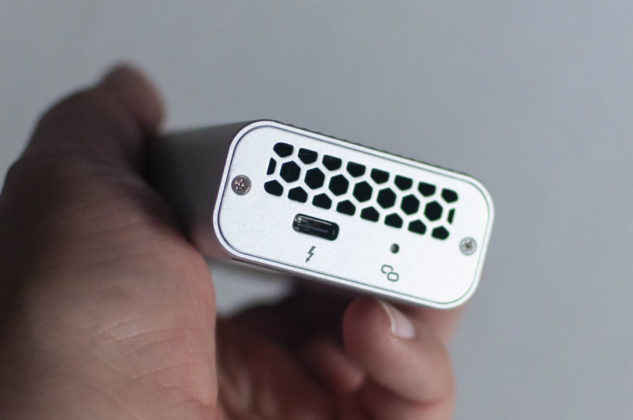
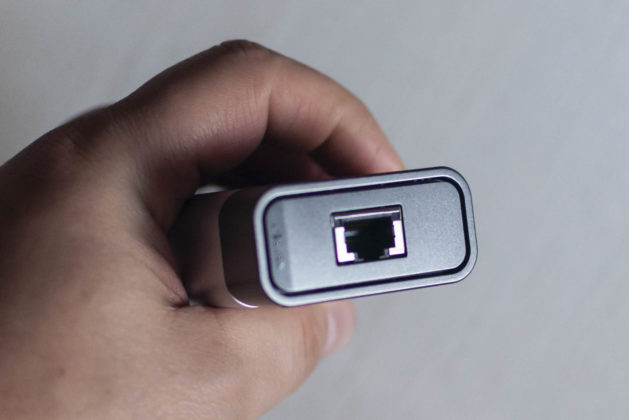
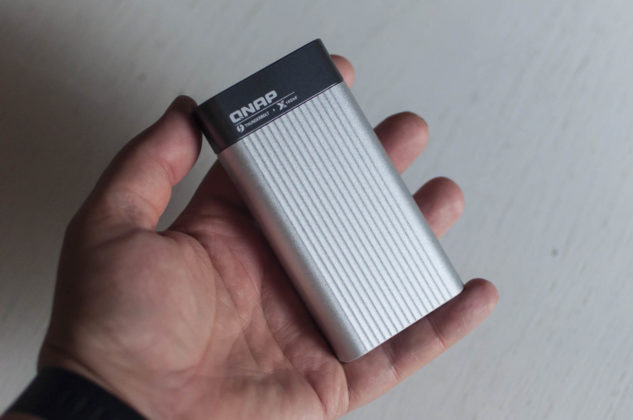
On one side there is the Thunderbolt 3 connector, which also offers a blue LED that indicates activity, while on the other the RJ45 connector. QNAP indicates that CAT 5e, CAT 6, CAT 6A or CAT 7 network cables are required for correct operation, the only ones capable of guaranteeing sufficient data throughput for a 10 GbE connection, even if the QNAP QNA-T310G1T is capable of operating on 10Gbps, 5Gbps, 2.5Gbps, 1Gbps and 100Mbps networks. We don't have power here either; it is a lightweight adapter that also fits in your bag.
 An example of Ping with the QNAP QNA-T310G1T
An example of Ping with the QNAP QNA-T310G1T
Conclusions
Both adapters are supplied with a cable, USB-A / USB-C for the QNAP QNA-UC5G1T or, depending on the version, Thunderbolt 3 / Thunderbolt 3, so they are completely independent. However, it is a question of choosing very compact models that fit comfortably in a bag or pocket and which, since they do not require power, do not need to have other accompanying accessories. Note that the supplied cables can also be used with Hard Disks (such as the LaCie Rugged Thunderbolt with USB-C) or other devices if necessary.
The speed measurement, performed with Cat6 cables, showed interesting data: we had nothing traveling at 10 GbE, but even considering a 1 Gbit network the results are very good and superior to the most common USB-C HUBs on the market.
Pro:
• Portable and fast connection • No power needed
Cons:
• The price is a bit high
Price:
• 230.58 Euro (QNA-T310G1T) • 91.50 Euro (QNA-UC5G1T)
For the purchase of the two QNAP adapters we report the list of official QNAP resellers, remembering that the products are available on Amazon, both for the QNA-UC5G1T and for the QNAP QNA-T310G1T





